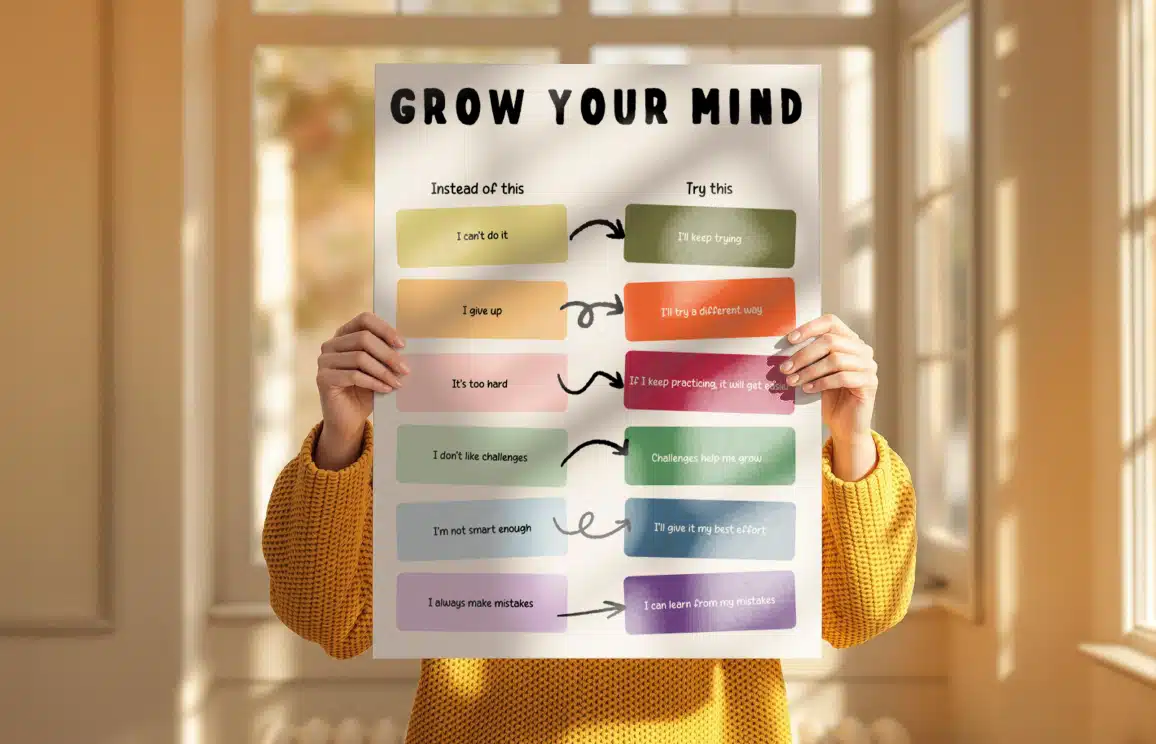How to Cultivate a Growth Mindset for Personal Transformation
A growth mindset is the key to unlocking your potential. By embracing challenges as opportunities to learn, you can develop resilience, overcome limiting beliefs, and set the stage for continuous personal development. In this blog post, we’ll explore the power of having a growth mindset, clarify the difference between a fixed vs. growth mindset, and share actionable mindset shift strategies to help you build a strong foundation for lifelong learning.
The Power of a Growth Mindset
Having a growth mindset means believing that your abilities and intelligence can be developed through dedication and hard work. This outlook influences how you handle obstacles and view mistakes:
- Continuous Improvement: Instead of seeing talent as static, you recognize your capacity to learn new skills.
- Resilience: Challenges become stepping stones rather than roadblocks.
- Open-Mindedness: You welcome feedback, seeing it as a tool for self-improvement.
Fixed vs. Growth Mindset
It’s helpful to understand the contrast between these two mindsets to see where you stand:
- Fixed Mindset: Believing you’re either “good” or “bad” at something. You might avoid challenges or fear failure, worrying it confirms your limitations.
- Growth Mindset: Viewing skills and intelligence as flexible. You’re willing to put in effort, tackle challenges, and learn from setbacks.
Shifting from a fixed mindset to a growth mindset doesn’t happen overnight, but recognizing the difference is the first step toward meaningful change.
Mindset Shift Strategies
Your mindset has the power to shape your entire approach to life. Here are a few mindset shift strategies to facilitate growth:
- Embrace Challenges
- Stretch Beyond Comfort Zones: Seek out activities that challenge you.
- Celebrate Effort: Value the process just as much as the outcome.
- Learn from Feedback
- Ask for Input: Welcome constructive criticism.
- Reflect and Adjust: Use feedback to refine your skills.
- Practice Self-Compassion
- Encourage Yourself: Replace negative self-talk with motivating words.
- Acknowledge Progress: Recognize small improvements to stay motivated.
- Set Realistic Goals
- Break Down Tasks: Divide bigger objectives into manageable steps.
- Track Achievements: Monitor milestones to measure success.
Overcoming Limiting Beliefs
Limiting beliefs can keep you from reaching your full potential. To break free:
- Identify Negative Patterns: Notice recurring thought patterns holding you back.
- Challenge Your Beliefs: Ask if these beliefs are facts or assumptions.
- Replace with Positives: Adopt a more empowering perspective.
Every time you confront and rewrite a limiting belief, you’re creating space for growth.
7-Day Growth Mindset Challenge
Below is a simple, fun challenge you can follow to explore and deepen your understanding of a growth mindset. Each day offers an exercise, a suggested affirmation, and a way to incorporate helpful tools.
1: Kickstart Your Growth Journey
- Exercise: Spend a few minutes reading about the basics of a growth mindset. Reflect on areas in your life where you could apply this perspective.
- Tool in Action: Place a Growth Mindset Poster in a spot you’ll see daily. Let it serve as a visual reminder of your commitment to self-improvement.
- Affirmation: “I am capable of learning new skills and expanding my abilities.”
2: Identify and Challenge Limiting Beliefs
- Exercise: Write down one limiting belief that’s been holding you back. Challenge it by listing evidence of times you succeeded despite doubts.
- Affirmation: “I am stronger than my doubts, and I choose growth over fear.”
3: Strengthen Your Mindset Vocabulary
- Exercise: Complete the Developing a Growth Mindset Word Search. As you find each word, think about how it applies to your daily life.
- Affirmation: “Every challenge I face is an opportunity for growth.”
4: Practice Positive Self-Talk
- Exercise: Whenever you catch yourself using negative self-talk, replace it with a positive statement. Keep a tally in your notebook to track how often this happens.
- Affirmation: “I turn setbacks into lessons, and lessons into progress.”
5: Focus on Self-Improvement
- Exercise: Use the Self-Improvement Word Search for a playful reminder of key ideas in personal development. Reflect on which words resonate most with you.
- Affirmation: “I embrace change and welcome new opportunities to grow.”
6: Visualize Your Best Self
- Exercise: Complete the Best Possible Self Worksheet. Envision your ideal future self, focusing on growth and personal potential.
- Affirmation: “I am continuously evolving into a better version of myself.”
7: Reflect and Celebrate
- Exercise: Review your progress over the past week. What have you learned about your mindset? What habits do you plan to continue?
- Affirmation: “I celebrate my journey toward a stronger, more resilient mindset.”
- Tool: Don’t you think you deserve this certificate? :)
Adopting a growth mindset is a powerful step toward ongoing personal development. By focusing on mindset shift strategies, challenging your limiting beliefs, and consistently practicing these daily exercises, you’ll be well on your way to unlocking your true potential. Remember, growth is always possible when you believe in your ability to evolve—and take action every day to make it happen.






